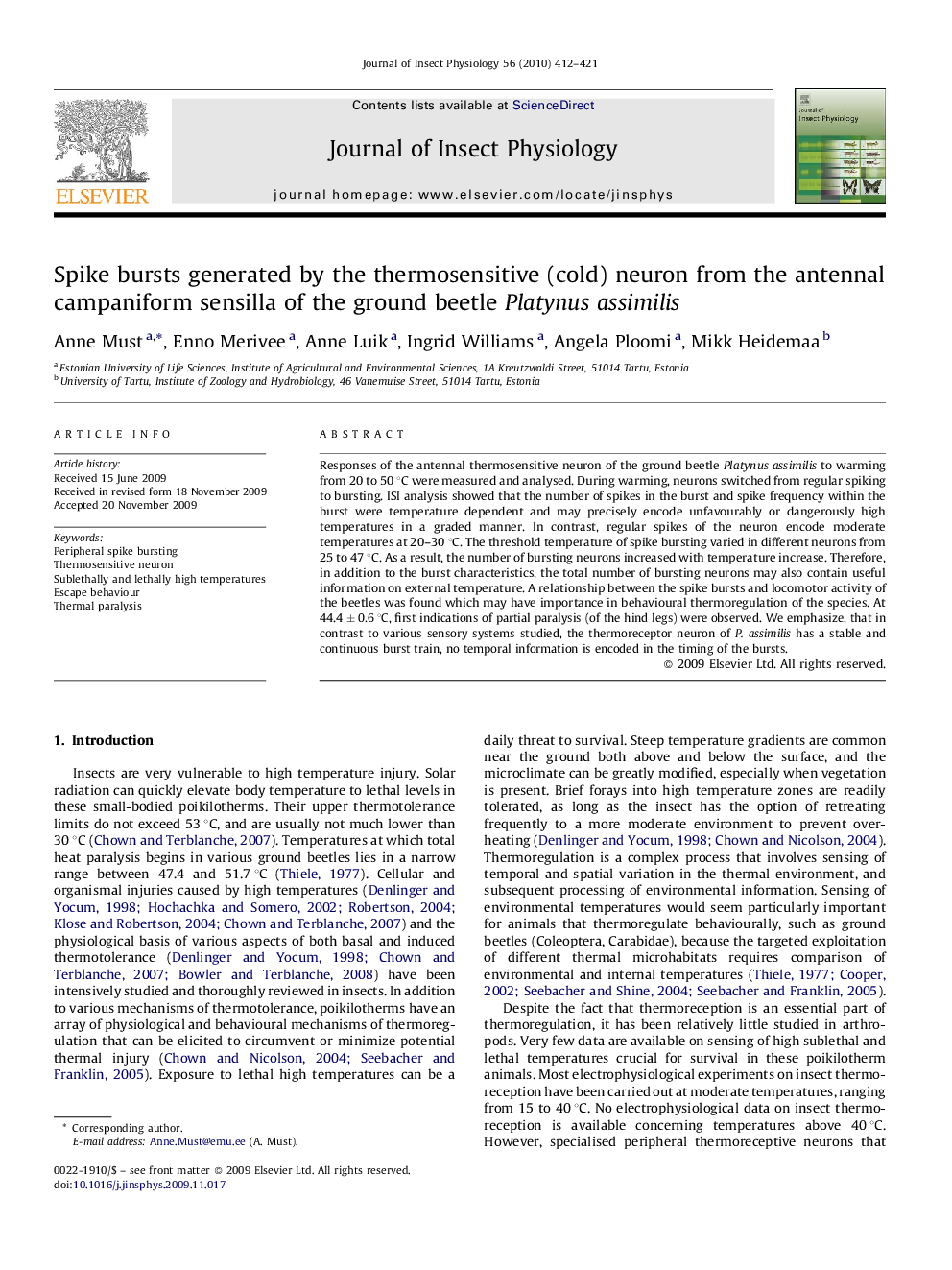| Article ID | Journal | Published Year | Pages | File Type |
|---|---|---|---|---|
| 2840998 | Journal of Insect Physiology | 2010 | 10 Pages |
Responses of the antennal thermosensitive neuron of the ground beetle Platynus assimilis to warming from 20 to 50 °C were measured and analysed. During warming, neurons switched from regular spiking to bursting. ISI analysis showed that the number of spikes in the burst and spike frequency within the burst were temperature dependent and may precisely encode unfavourably or dangerously high temperatures in a graded manner. In contrast, regular spikes of the neuron encode moderate temperatures at 20–30 °C. The threshold temperature of spike bursting varied in different neurons from 25 to 47 °C. As a result, the number of bursting neurons increased with temperature increase. Therefore, in addition to the burst characteristics, the total number of bursting neurons may also contain useful information on external temperature. A relationship between the spike bursts and locomotor activity of the beetles was found which may have importance in behavioural thermoregulation of the species. At 44.4 ± 0.6 °C, first indications of partial paralysis (of the hind legs) were observed. We emphasize, that in contrast to various sensory systems studied, the thermoreceptor neuron of P. assimilis has a stable and continuous burst train, no temporal information is encoded in the timing of the bursts.
